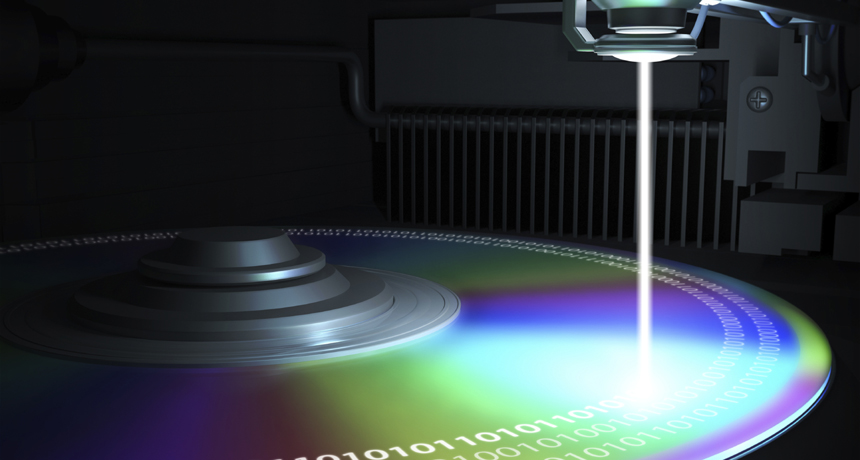Explainer: What is a laser?
A lesson on the brightest light source on Earth

Digital video discs (DVDs), laser movie discs and compact discs used to store music and data all rely on a laser, like the one shown here, to read the zeros and ones that encode the material stored on these discs. You can’t actually “see” those zeros and ones, so an artist has graphically superimposed some onto the top of the disc to suggest what the laser is “reading.”
kstimage/iStockphoto







